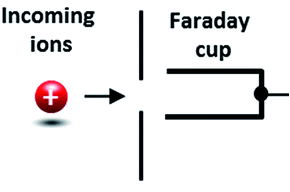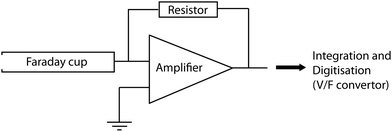Do chemists count atoms and molecules?
1 Answer
Jun 29, 2016
Of course, that would be a LOT of fun! We'd count atoms/molecules all day, losing track of time (and them), and having to start over a few thousand times!
No, I'm kidding. We let detector technology do that for us!
For example, a Faraday cup is one possible detector that can be placed at the end of a mass spectrometer to count charged particles (such as ions) that collide with it.
The basic process then is:
- Load the sample.
- Hit it with an ionization source. Some examples are electron beams, ESI, or MALDI. This has to occur, for the Faraday cup to be able to count ions.
(depicted is a simplified MALDI setup) - Make it go through some analysis process. Fragmentation, perhaps, like in all mass spectrometry? Maybe you'll have a filtering process to choose the kinds of ions you want.
(depicted is a quadrupole filter) - Send the ions at the detector to generate a count signal.

- Amplify the signal if necessary (such as some sort of operational amplifier), and then convert it into a spectrum able to be read by people. This converter is called a transducer.

(In fact, it's common in mass spectroscopy to have a detector count ions, send the signal to a transducer, which returns a mass spectrum of ion abundances.)

